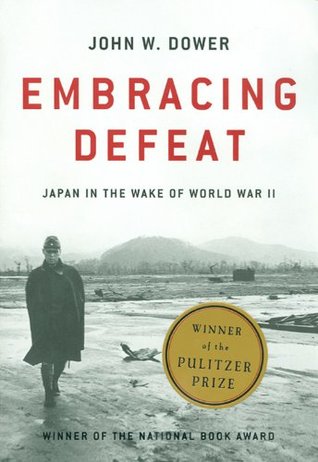More on this book
Community
Kindle Notes & Highlights
this continuum of familiar language conveyed a sense of stability, and so functioned as psychological balm at a time of acute stress and unusually drastic change.
“Muster the Yamato Heart for Construction” and “Everyone Serving for Construction.”
“Rising-Sun Land, Superior Culture” was a typical slogan from the China War.
newborn democratic Buddhism,
As the wartime slogan “A New Culture Tied to a Radiant Past” indicates, however, newness (like culture and brightness) was a concept that lay at the very heart of the ideology of imperial Japan.
From the Japanese perspective, the war years were an attempt to throw off the status quo—to transcend the global depression and to catch up with the more advanced industrial economies of the West.
Transcend THIS, mother fucker!
Anyway, they got what they wanted in a round about way, like the way the Germans took over Europe.
“Change,” in a word, was itself a continuity. The Japanese had not been socialized to preserve the status quo.
renovation and iconoclasm were strains as deeply imbedded in consciousness as were reverence for the past or acquiescence to the powers that be.
The magazine went on to call for the elimination of unscientific elements from scholarship and irrationality from all aspects of social behavior.
zaibatsu,
U.S. occupation ideals had been clearly articulated. The editors summarized these as democracy, respect for individuality, freedom of speech and religion, and world peace—and
based on the demands of human nature and universal justice.”
central to all endeavors was the creation of a society based on social justice and responsive to the will of the people.
Only that kind of society would prevent tyranny and dictat...
This highlight has been truncated due to consecutive passage length restrictions.
the country’s all-time best-selling publication until 1981.
Eminent literary figures who had chafed under or been censored by the militarists—such as Nagai Kafū, Tanizaki Junichirō, Kawabata Yasunari, and Osaragi Jirō—became celebrities again.
The “top ten” bestsellers from 1946 to 1949 collectively conveyed an impression of cosmopolitan breadth and serious purpose never again to be matched, as ordinary citizens proved responsive to writings that addressed abiding issues of human nature and social responsibility.
Postwar readers, for instance, immediately turned in large numbers to the greatest of their modern writers, Natsume Sōseki, who died in 1916.
Much of his attractiveness during these uncertain years lay in the unflinching candor with which his fiction explored intimate personal relationships.
love between man and woman—painful, conflicted, irresistible—was his most obsessive concern.
the iconoclastic thirteenth-century religious leader Shinran.
Of the trio of best-selling posthumous heroes, surely the most fascinating was Ozaki Hotsumi.
Takada Tadashi, the judge who sentenced him to death in 1944, privately stated after the secret trial that he regarded Ozaki as not merely a man of virtue and ideals, but as a model patriot—hardly
1916 when, as a seventeen-year-old college student, she published a novel titled Mazushiki Hitobito no Mure (A Flock of Poor People).
Like many Japanese in Nagasaki, Nagai was a Christian.
“the saint of Nagasaki.”
The pope paid tribute to Nagai. Helen Keller visited him at his sickbed, as did Emperor Hirohito.
“Was not Nagasaki the chosen victim, the lamb without blemish, slain as a whole-burnt offering on an altar of sacrifice, atoning for the sins of all nations during World War II?”
fatuous,
As in the writings of Nagai Takashi, war was understood and repudiated primarily in terms of its destructive effects on Japanese.
MacArthur played this role with consummate care. Like the emperor and the feudal shoguns, he ensconced himself in his headquarters, never associated with hoi polloi, granted audiences only to high officials and reverential distinguished visitors, issued edicts with imperious panache, and brooked no criticism.
political, economic, social, and cultural policy,
buffonic”).
inducing democracy autocratically
Under the new constitution that came into effect in 1947, the Japanese in theory became citizens and no longer just the “subjects” of their emperor. In practice, however, they remained the subjects of the occupation.
Americans demonstrated serious interest in aspects of Japanese culture and a sense of bearing responsibility toward strangers that was unfamiliar and attractive (or sometimes just bizarre) to their Japanese neighbors.
They took people unknown to them to hospitals and did favors without expecting repayment.
statistical quality control,
Nibelungenlied;
as a rule the victors conducted themselves with far greater discipline than the Japanese military had exercised in occupied areas of Asia,
the civilian bureaucracy was left essentially untouched
There are other traits of character—reliability, ingenuity, industriousness, thrift, bravery, aggressiveness, honesty.
the average Japanese displays these characteristics in about the same manner and measure as other people in other lands.
Other materials directed to American audiences, especially troops assigned to occupation duty, similarly endeavored to convey the notion that the “little Japanese” were almost humans like themselves.
the Japanese were a people “trained to play follow-the-leader.”
“The Sun Goddess Created the Japanese to Rule all Other Peoples of the Earth.”
Although Japan’s leaders in fact had never contemplated “world conquest,” this had been a staple of wartime American propaganda and was not about to be repudiated now.
Our Job in Japan
the “obedient herd” or “monstrous beehive” (another pet phrase) of Orientals.


